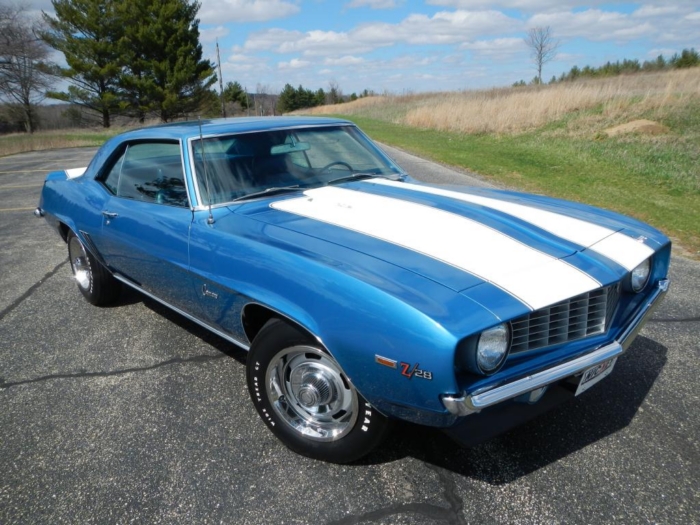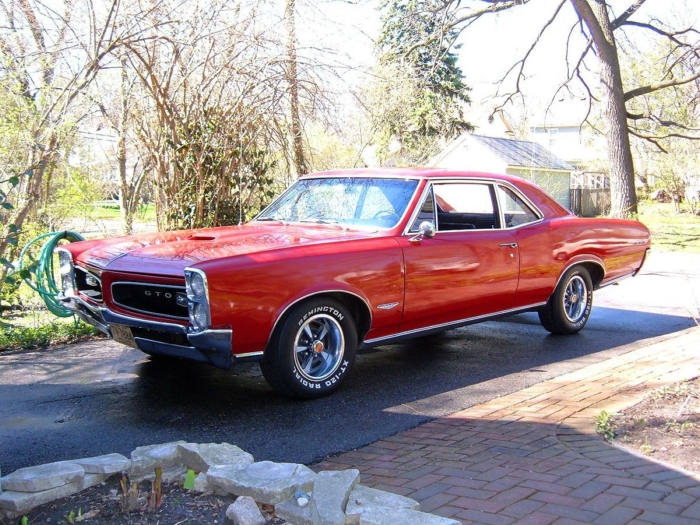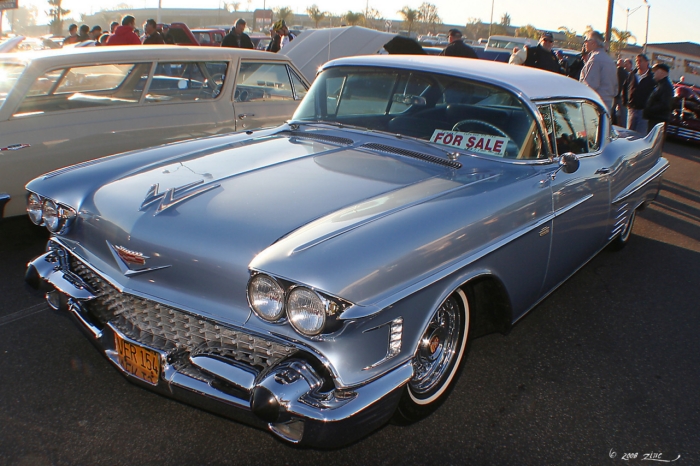Have you got the vintage car bug? Can't wait to find that classic that you always wanted to own? Is money burning a hole in your pockets? Can't wait to get starting on that restoration? Before you plunk down your hard-earned money, here are 5 points to consider. 1.…
Buying Your First Classic Car
But it’s so perfect!
You know how it works. You have some spare cash burning a hole in your pocket – and a gorgeous classic Camaro daring you to buy. The owner smiles at you, explaining that this particular ’69 Z/28 Camaro is very special, with low mileage and a completely original interior – and it’s a real X33 code package! Absolutely mint. He only wants $5,000 for it and you can drive it away right now.

1969 Camaro Z/28 with X33 Package
Unless you have something against Camaros, it’s pretty reasonable to imagine becoming slack-jawed at the idea of paying so little for a pristine ’69 Z/28. Being Camaro lover ourselves, the first instinct that kicks in would be that of a madman, forking over the cash so fast that my fingers would bleed.
Sadly, knowing that a car in that condition can sell for at least $30,000 on the very low end, and closer to $60,000 and up on the reasonable end, you just have to wonder. No one is foolish enough to let a legend like this go for practically pennies, unless…
Hey, if you’ve made it this far, you’re on the right track. It might be surprising, but most of the really horrible purchases that classic car buyers get talked into are really their own fault. Car lovers get weak in the knees around legendary love-affairs like a 1969 muscle car, so it can be tough to keep a clear head.
The best thing you can do to protect yourself is to not let yourself be pressured.

1966 Pontiac GTO
Research
Research the car you’re thinking about – not just performance specifications and history, but model options and codes, current selling prices, and typical weaknesses. By weaknesses, we’re talking about those little quirks that even the best cars have as they age. A lot can happen to a car in four decades or longer, so it definitely pays to find out what commonly goes wrong on that particular model of car – then you can check those areas specifically.
Unfortunately, getting some solid information in your hands isn’t always easy. Contacting the original manufacturer often results in little that’s useful, since most of their customer service reps are going to be well-versed in modern vehicles, not classics. So where do you go for info?
First, try the Internet. There are quite a few websites that specialize in classic car information, many of which have forums that let you ask questions about a potential purchase. To make things easier, you’ll find a few sites at the end of this article that will help you determine what a car is worth and help you get some information.
Next, try the bookstore (both the local ones and the online ones). If you have a popular car in mind for purchase, you’ll probably see a few books that feature it exclusively. Even if you’re looking at a rare beauty that no one has dedicated a book to, some of the general restoration and vintage car guides out there are packed with great tips. Knowing what to look for really is a big deal. The good news is that if a model has a really common problem, you’re going to hear about it on the Internet or read about it at the bookstore.
Finally, if you’re lucky enough to have a few classic car mechanics nearby, give them a call. Chances are they’ve worked on cars just like the one you’re drooling over. They can tell you what little things you can check for just by looking – such as the alignment of the front clip, which is a big deal – and may even offer to take a look at the car for you. If the car runs, you just might convince the car’s actual owner to come with you and have it evaluated. Naturally, you should expect to pay for this service. If you aren’t convinced during this evaluation, get a second opinion. This entire process will depend heavily on how much time the actual owner is willing to invest – some will be happy to accommodate your request, while others will be too busy or unwilling to let the car out of their garage.
Having done that, you’ll have a good idea of what you should be paying. Mint condition cars are certainly out there, even from as far back as the 1900’s, but always assume something is wrong with the car until proven otherwise. Be meticulous, question everything, and do your homework. If you have the option, drive or otherwise transport the car to an experienced classic car mechanic – it’s worth a few bucks to check the car over for the less obvious things.

1958 Cadillac Coupe deVille
Making the deal
If you find yourself in the position to buy a classic that’s in great condition for a reasonable price, congratulations! The rest is between you, your spouse and your bank. It’s also a great idea to read up on some of our other tips and suggestions for financing, just to be sure you get the best deal from all angles.
On the other hand, you might have to make a big decision. The car you’re looking at might not be pristine, but it’s workable. You might try to quickly calculate the price of replacing the obvious things, asking local mechanics for estimates on repairs and so on, but one thing never changes: you’ll always end up paying more for repairs than you expect.
A good rule of thumb is to plan on paying half again as much as you anticipate. The thing with old cars is that… well, they’re old. When one thing gets fixed up, something else falls apart. Or, even more common, replacing something simple uncovers something very wrong. As you can guess, things that go very wrong end up costing a whole lot of money.
Restoring classic cars is an exciting hobby. There’s no better feeling than cruising down the freeway in a classic car that looks like it just rolled off the assembly line while watching heads spin. We’re here to help you get there! We have a huge inventory of vintage hubcaps, which coupled with our rechroming services, deliver that retro style with fresh aesthetics. If that sounds like too much work, upgrade your classic auto with our unrivaled selection of OEM wheels.







